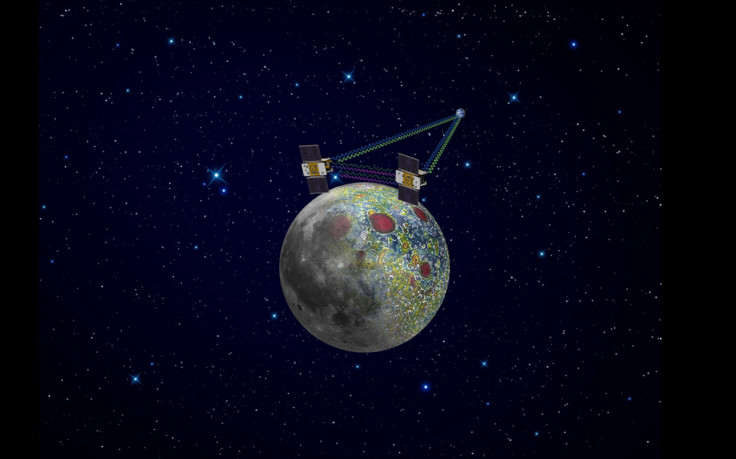‘Man In The Moon’ Explained By Lunar NASA Mission, More Large ‘Impactors’ On Near Side [PHOTO]

New data taken from a lunar-orbiting spacecraft have revealed what created the man in the moon.
Images taken from spacecraft belonging to NASA's Gravity Recovery and Interior Laboratory (GRAIL) mission shed some light on why the face of the moon is rugged. The results were published in this week's edition of the journal Science.
"Since time immemorial, humanity has looked up and wondered what made the man in the moon," Maria Zuber, GRAIL principal investigator from the Massachusetts Institute of Technology in Cambridge said in a statement. "We know the dark splotches are large, lava-filled, impact basins that were created by asteroid impacts about 4 billion years ago. GRAIL data indicate that both the near side and the far side of the moon were bombarded by similarly large impactors, but they reacted to them much differently."
While lunar basins had been previously identified, there were conflicting reasons on why they were formed since their size couldn’t be determined since most were filled with lava flows that skewed their dimensions. For the first time, the GRAIL mission was able to measure the internal structure of the moon in detail over a period of nine months in 2012.
The data found there more large impact basins on the near-side hemisphere of the moon than those on the far side. Scientists speculate the temperature on either side of the moon may be the cause: there are higher heat producing elements like uranium and thorium on the near side than the far side which may result in volcanic eruptions.
"Impact simulations indicate that impacts into a hot, thin crust representative of the early moon's near-side hemisphere would have produced basins with as much as twice the diameter as similar impacts into cooler crust, which is indicative of early conditions on the moon's far-side hemisphere," notes lead author Katarina Miljkovic of the Institut de Physique du Globe de Paris.
The “Man in the Moon” -- a familiar illusion where a human face appears on the moon’s surface is believed to be caused by dark and lighter areas on the lunar surface are arranged. A previous study attributed the illusion to how the moon rotates. Researchers found the moon is locked in a “synchronous orbit.” Every time the moon orbits around the Earth, the moon also rotates exactly one time, which is why the Man in the Moon always faces us.
"The real coincidence is not that the man faces Earth," Oded Aharonson, professor of planetary science at the California Institute of Technology said in a statement. Instead, the real coincidence how the moon slowed its spinning enough to give the apparent “face” a slight edge.
© Copyright IBTimes 2024. All rights reserved.












